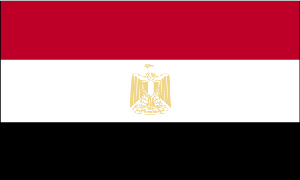Bank Audi: Egypt Economic Report, April 2011
So that the transition brings genuine hopes to economic expectations.

Bank Audi presents Egypt Economic Report of April 2011.
Economy caught in political upheaval: Recent developments in Egypt have had considerable adverse economic spillovers. Egypt’s economy has been in disarray for the last twelve weeks, with some of the main sources of foreign exchange, including tourism and foreign investment, having buckled and many factories operating at much below existing capacity. Most sectors were affected in the early months of 2011, namely wholesale and retail trade, tourism, financial and business services, transport, telecommunications and manufacturing, leading to a downward revision of real output growth to 1% as per IMF forecasts.
Some areas still proving resilience: But a number of external growth drivers are not being much affected by the turmoil. The Suez Canal was operating more or less normally amid the crisis and hydrocarbon revenues have proven resilient to the turmoil. Workers remittances, which account for close to US$ 8 billion in foreign exchange revenues annually, were somehow affected but at a much less significant pace than other foreign currency inward flows.
A number of external growth drivers are not being much affected by the turmoil. The Suez Canal was operating more or less normally amid the crisis and hydrocarbon revenues have proven resilient to the turmoil.
Fiscal accounts under pressure again: Following a streak of fiscal improvements in recent years, Egypt’s political turmoil could lead again to a deterioration in public finances. The government is expected to increase spending on subsidies and public works projects adding to the recently adopted 15% wage hike in the public service, while revenue would be depressed by a fall in economic activity and trade. Public debt, which stands at circa 75% of GDP today, might rise to above 80% as government borrowing witnesses a rapid increase to finance a widening budget deficit that might hit a double-digit figure this year.
But buffers remain adequately significant: Luckily, the economy is adequately buffered by a relatively high reserve cushion against capital outflows, low foreign indebtedness, robust external position and a solid and highly liquid financial system to withstand the transition. Although declining this year on account of forex intervention and weakening inflows, Egypt’s official FX reserves remain considerable at US$ 30.1 billion at end-March, covering close to 25% of local currency deposits, allowing domestic authorities to dampen downturn related currency pressures. In parallel, with a healthy bank core liquidity ratio of 31%, a low loan-to-deposit ratio of 48% and a satisfactory capital adequacy ratio of circa 14%, Egypt’s banking sector remains well positioned to weather the unrest spillovers.
Market downturn creating appeal for domestic securities: Egypt’s capital markets ended the first quarter in a net demand mood. Equities became appealing for investors which strived to take advantage of buying opportunities, with a market P/E of 10.6x and P/BV of 1.47x at end-Q1 (regional averages of 14.0x and 1.69x respectively). Looking ahead, the possible materialization of a smooth and successful transition to a promising political landscape could pave the way for an increased attractiveness of Egypt’s capital markets on the global arena.
Near term challenges along with pent-up opportunities: The challenges of delivering on expectations for economic recovery are evidently unprecedented. But though issues like job growth requirements, fiscal drifts and inflation forecasts represent serious challenges to the outlook, the country’s large opportunities outpace such challenges in an economy operating at much below potential output. The shock the political landscape brought about at the beginning of the new year might end up, in the assumption of wise policymaking, carrying with it the triggers for a sustainable growth in real output and in the standard of living and welfare.
The article above has been published as a part of Bank Audi`s Egypt Economic Report, April 2011. It can be accessed via Internet at the following web address : http://www.banqueaudi.com